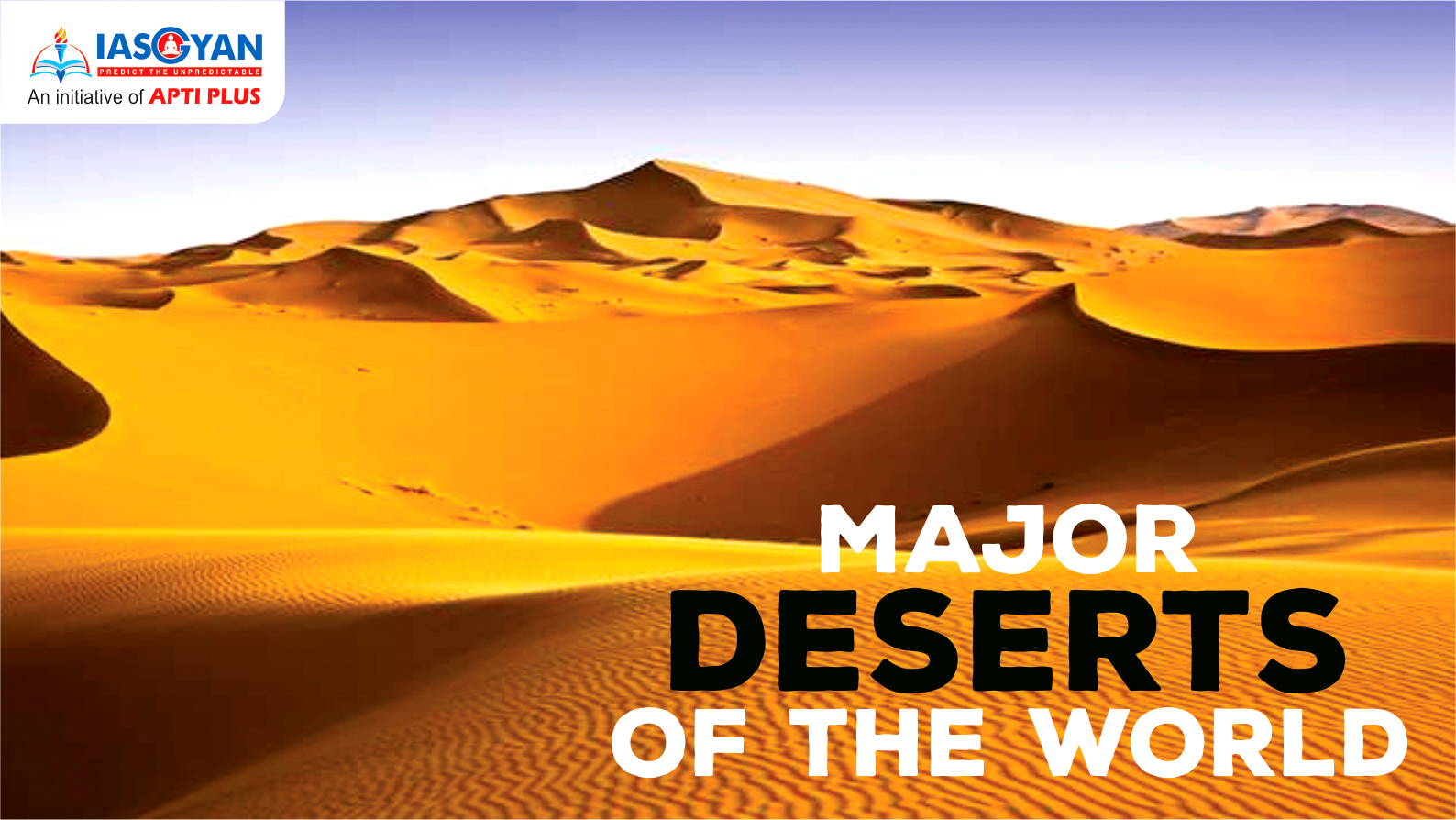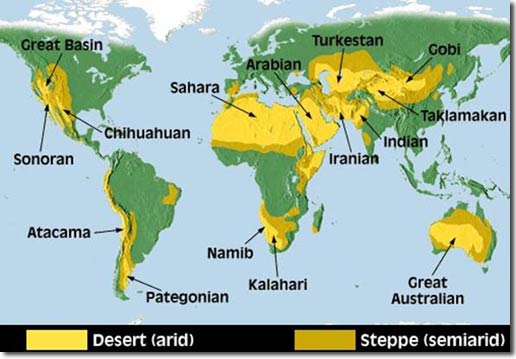





|
Major Deserts of the World |
|||
|
Name |
Type of Desert |
Surface Area |
Location |
|
Antarctic |
Polar |
5.5 million mi² |
Antarctica |
|
Arctic |
Polar |
5.4 million mi² |
Alaska, Canada, Greenland, Iceland, Norway, Sweden, Finland, Russia |
|
Sahara |
Subtropical |
3.5 million mi² |
Northern Africa |
|
Arabian |
Subtropical |
1 million mi² |
Arabian Peninsula |
|
Gobi |
Cold Winter |
500,000 mi² |
China and Mongolia |
|
Patagonian |
Cold Winter |
260,000 mi² |
Argentina |
|
Great Victoria |
Subtropical |
250,000 mi² |
Australia |
|
Kalahari |
Subtropical |
220,000 mi² |
South Africa, Botswana, Namibia |
|
Great Basin |
Cold Winter |
190,000 mi² |
United States |
|
Syrian |
Subtropical |
190,000 mi² |
Syria, Iraq, Jordan, Saudi Arabia |
|
Chihuahuan |
Subtropical |
175,000 mi² |
Mexico |
|
Great Sandy |
Subtropical |
150,000 mi² |
Australia |
|
Kara-Kum |
Cold Winter |
135,000 mi² |
Uzbekistan, Turkmenistan |
|
Colorado Plateau |
Cold Winter |
130,000 mi² |
United States |
|
Gibson |
Subtropical |
120,000 mi² |
Australia |
|
Sonoran |
Subtropical |
120,000 mi² |
United States, Mexico |
|
Kyzyl-Kum |
Cold Winter |
115,000 mi² |
Uzbekistan, Turkmenistan, Kazakhstan |
|
Taklamakan |
Cold Winter |
105,000 mi² |
China |
|
Iranian |
Cold Winter |
100,000 mi² |
Iran |
|
Thar |
Subtropical |
75,000 mi² |
India, Pakistan |
|
Simpson |
Subtropical |
56,000 mi² |
Australia |
|
Mojave |
Subtropical |
54,000 mi² |
United States |
|
Atacama |
Cool Coastal |
54,000 mi² |
Chile |
|
Namib |
Cool Coastal |
13,000 mi² |
Angola, Namibia, South Africa |
© 2026 iasgyan. All right reserved